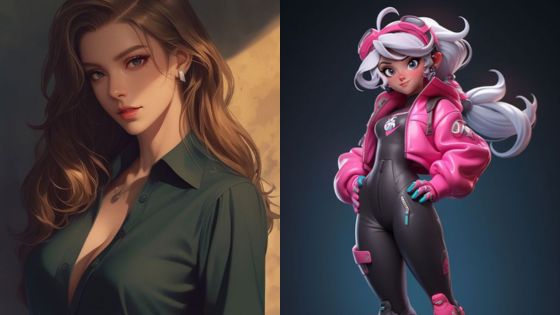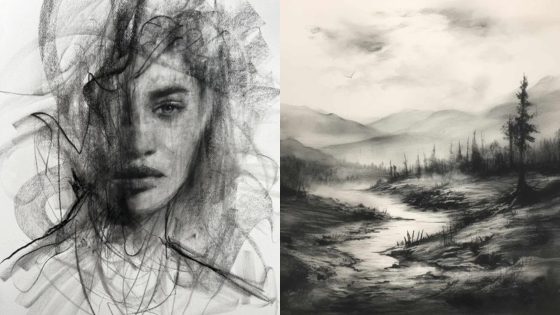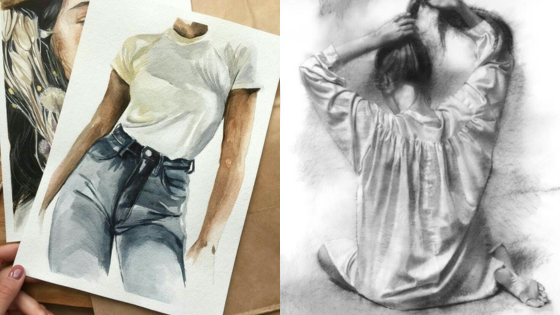When it comes to mastering anime artistry, using reference images for poses can elevate an artist’s skill and creativity. It’s crucial to understand the unique art style that defines anime, with its emphasis on exaggerated features and expressive gestures. Anime pose references serve as a cornerstone for artists looking to infuse dynamism and personality into their characters.
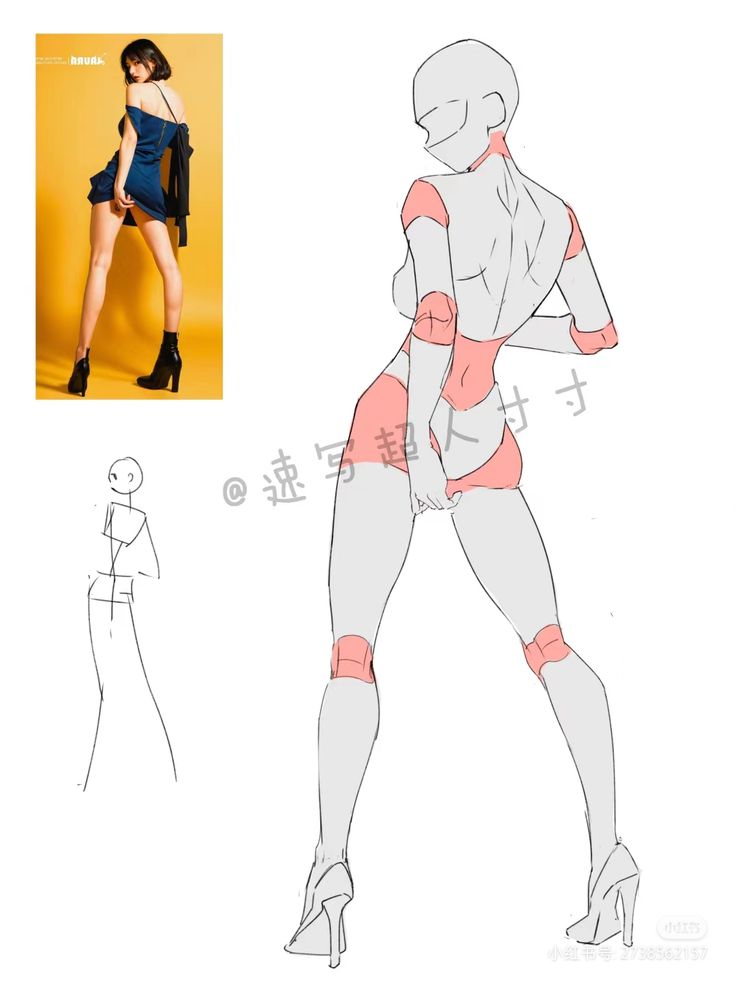
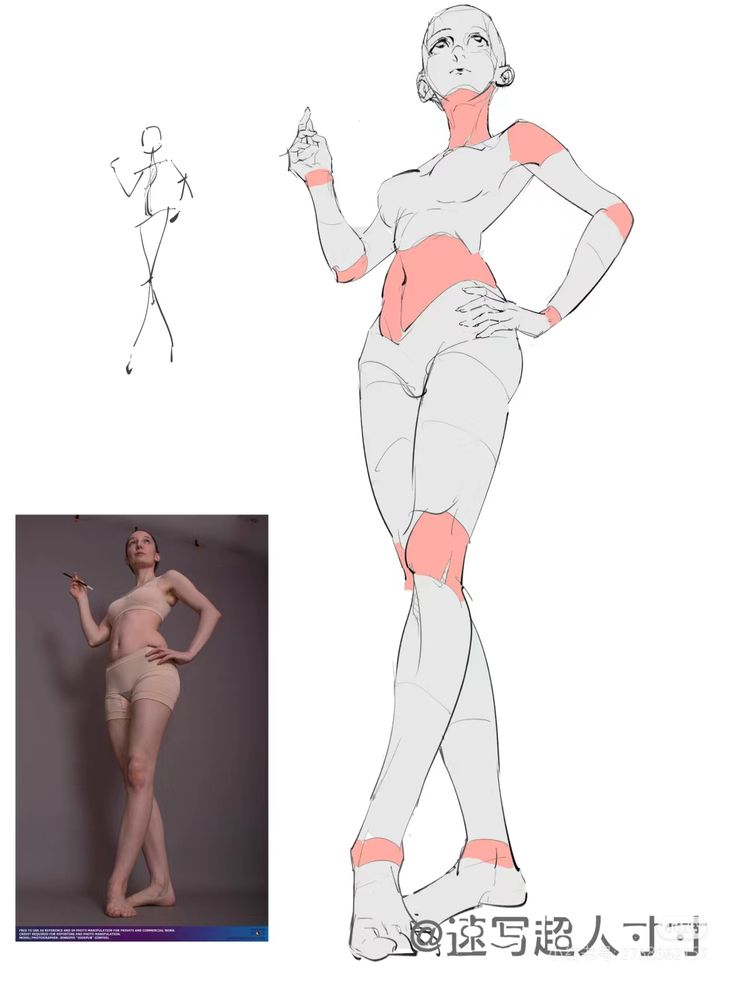
Whether an artist is exploring basic stances or crafting dynamic, emotion-filled scenes, references provide valuable guidance. Artists can observe how different genders may impact postural characteristics or how emotive expressions are conveyed through simple lines and angles. This kind of insight is indispensable for anyone striving to enhance their drawing skills and create compelling anime art.
References not only aid in replicating accurate human anatomy but also in developing an artist’s unique style. By studying existing poses, artists can experiment and push creative boundaries while ensuring authenticity in their character designs. These resources, combined with a variety of tools and exercises, empower artists to tackle challenges and refine their craft.
Key Takeaways
- Using anime pose references enhances drawing skills and creativity.
- Understanding unique anime art styles is vital for expressive character creation.
- Artists can improve poses by studying differences and utilizing reference tools.
Understanding Anime Art Style
Anime art style is known for its distinctive visual traits and has a rich history. Key features that capture attention include expressive facial expressions, dynamic poses, and unique character designs.
History and Evolution
Anime began in Japan in the early 20th century and has evolved significantly since. Starting with simplistic animations inspired by Western cartoons, it gradually developed unique characteristics that set it apart. Influences from Japanese culture, such as traditional art and storytelling, are prevalent in early works. Over the decades, technological advancements accelerated this evolution. The introduction of digital tools enabled more intricate designs and complex animations. Iconic production studios like Studio Ghibli and Toei Animation played key roles in shaping modern anime. Their contributions popularized anime globally, influencing numerous artists and animators worldwide. Today, anime is a diverse and adaptable art form, characterized by stylistic innovation and cultural exchange.
Characteristics of Anime Poses
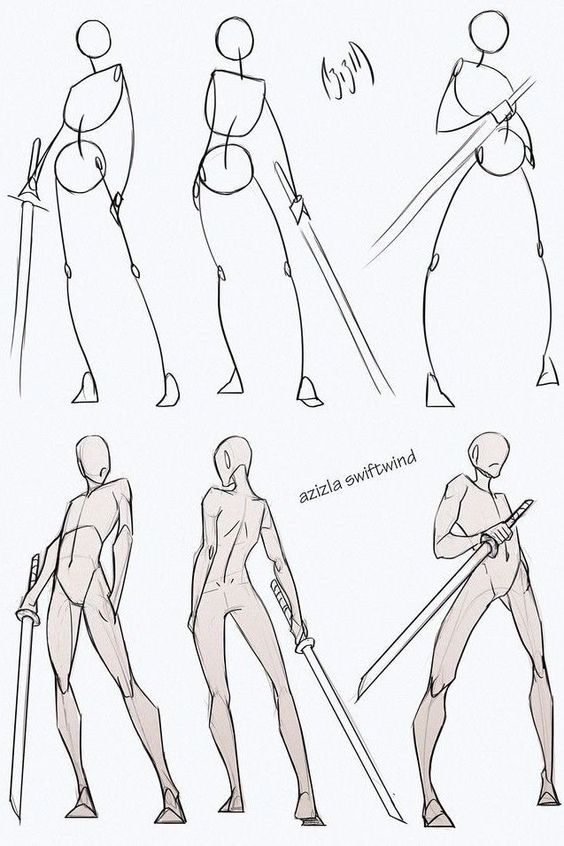
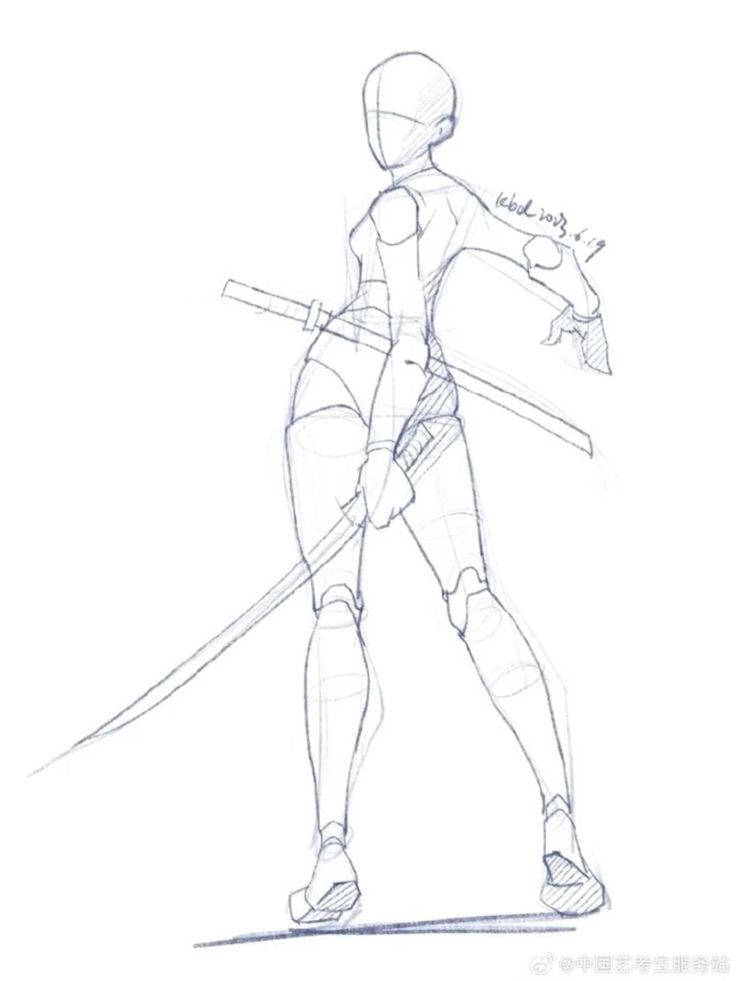
Anime poses are integral to conveying emotion and action. Characters are often depicted in exaggerated stances, which enhance their personalities and narratives. Features such as large, expressive eyes and detailed hair contribute to the distinctive appeal. Poses range from dramatic action stances to subtle, introspective positions, allowing a wide range of emotional expression. Motion lines and perspective play crucial roles in suggesting movement and energy. The variety in poses showcases characters’ emotional depth and situational context. Artists emphasize key body parts, using foreshortening and perspective techniques to create dynamic visuals. Overall, these poses help define the anime style, making it uniquely engaging for audiences around the world.
The Role of Reference in Anime Drawing
Using reference materials significantly aids in capturing accurate proportions and dynamic poses in anime drawing. While beneficial, careful attention is needed regarding the legal aspects of using these materials.
Importance of Using References
Anime artists often rely on reference images to refine their skills and ensure realistic portrayal of characters. References help in understanding anatomy, perspective, and complex poses that may be challenging to draw from memory. They offer a foundation, allowing artists to adapt and modify poses to fit their unique style.
By using references, artists can improve their technical skills and gain confidence in creating intricate artworks. References serve as a learning tool, helping artists analyze movement and character design. Consequently, they can develop their own style while maintaining the essence of classic anime aesthetics.
Legal Considerations for Reference Material
When using reference materials, artists should consider copyright laws to avoid legal issues. It is crucial to determine whether the reference image requires permission or if it falls under fair use. Understanding the legal boundaries can prevent potential disputes with original creators.
Some materials might be in the public domain, offering a safe alternative for references. Licensing agreements or creating original photographs are also viable options. It’s important for artists to remain informed about these legal details, ensuring their work respects creators’ rights while also enabling artistic freedom.
Basic Anime Poses
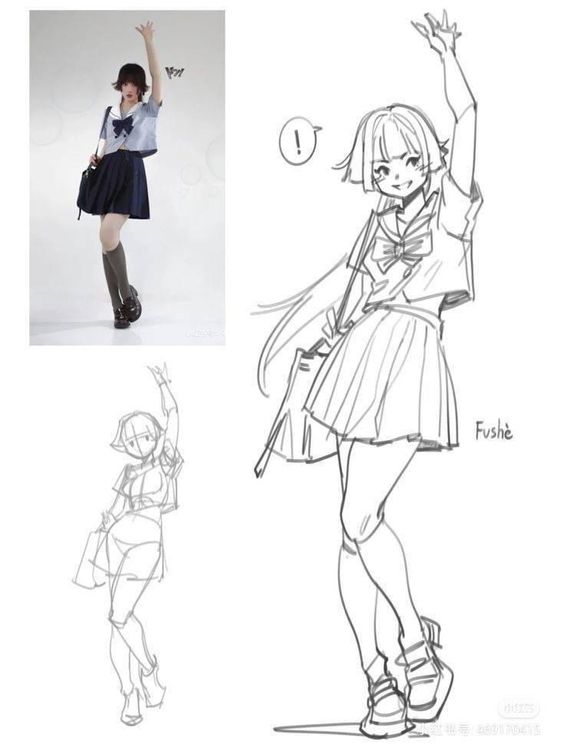
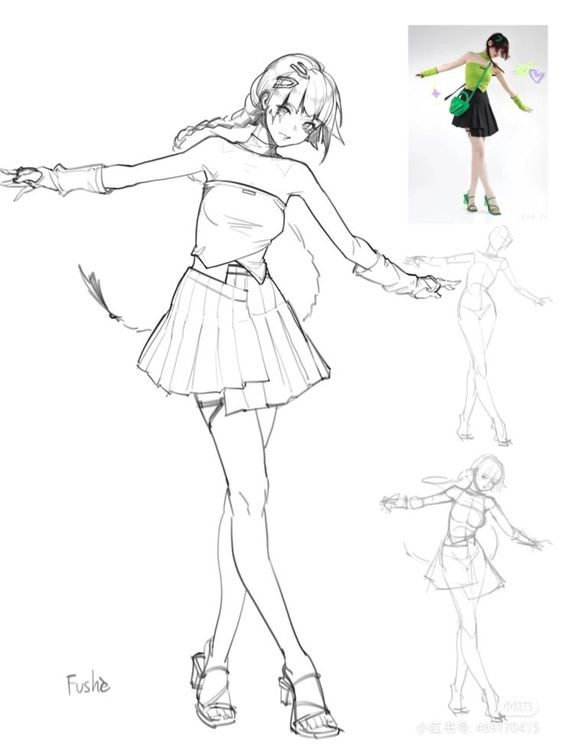
Posing is essential in anime to convey character personality and action. Various poses, such as standing, sitting, and dynamic, are fundamental in depicting characters with clarity and emotion.
Standing Poses
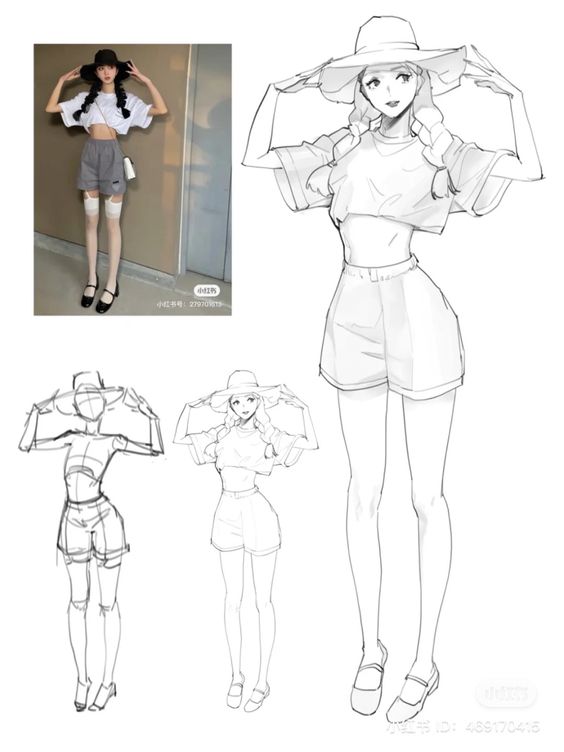
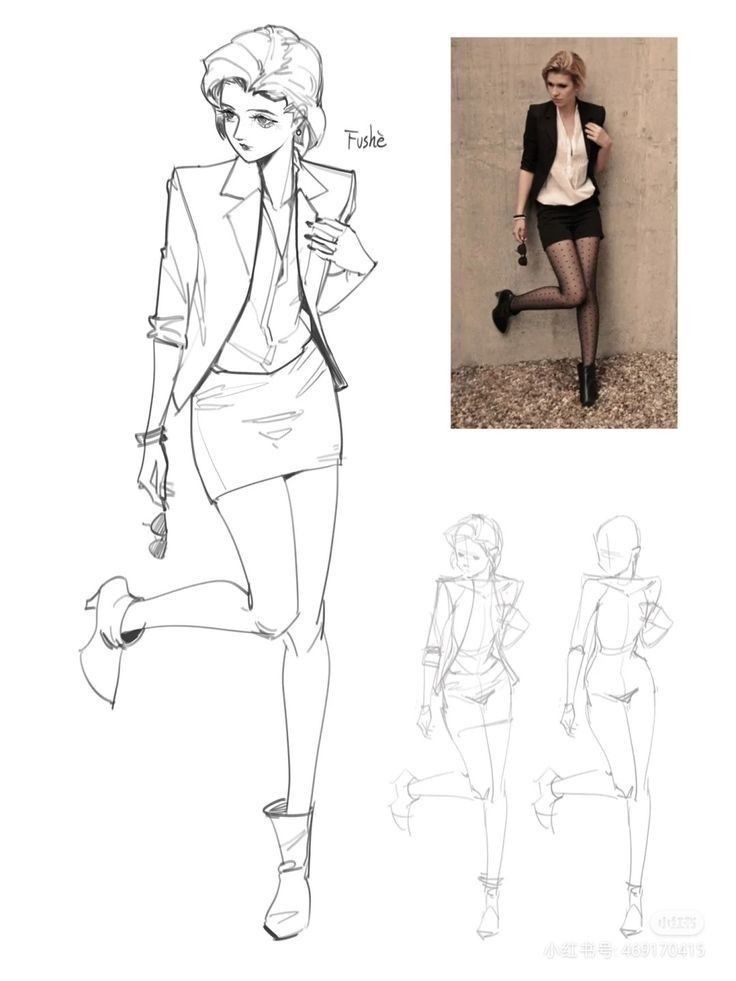
Standing poses form the base of character design and can convey a variety of emotions. They are often used to express a character’s personality, mood, or physical state.
A neutral standing pose is the simplest form, typically used when a character is at rest. More dramatic standing poses can involve a character shifting their weight to one leg, known as a contrapposto stance, adding a sense of realism and life.
Hand positioning also plays a significant role. Arms crossed can suggest defensiveness, while hands on hips might show confidence or defiance. Attention to foot placement, where the direction of toes may indicate the character’s focus, is crucial for the effectiveness of the pose.
Sitting Poses
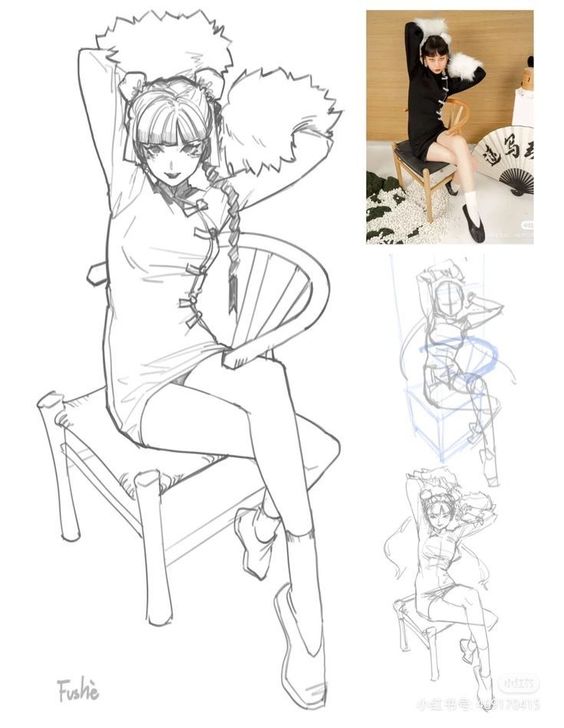
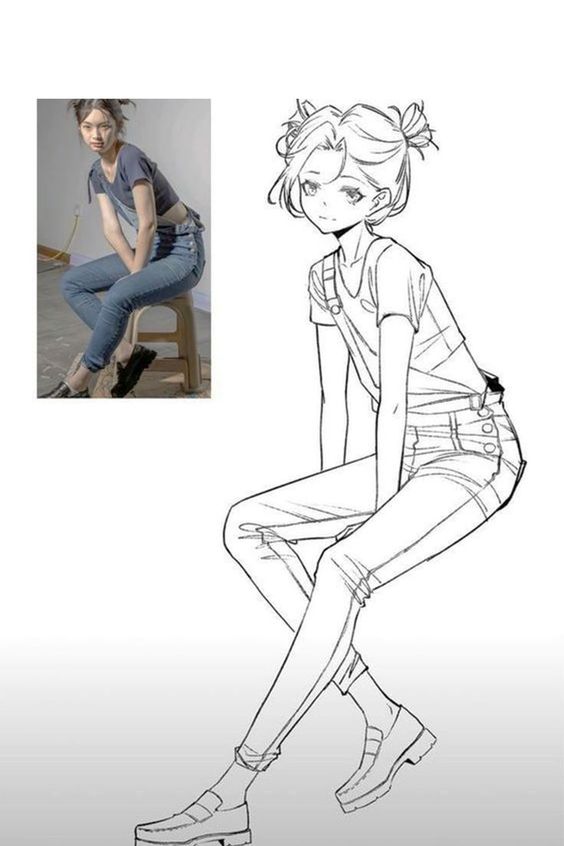
Sitting poses add depth to scenes, showing characters in moments of relaxation, contemplation, or casual interaction. The pose can indicate different emotional states or active engagement in a scene.
A cross-legged position on the floor often suggests comfort or informal settings. Chairs or benches can depict elegance or formality, especially when paired with straight backs or feet flat on the ground.
Details such as hand placement—whether on knees, a table, or adjusting hair—add to the pose’s narrative. The tilt of the head when sitting, along with eye direction, can further communicate emotion, drawing viewers deeper into the character’s experience.
Dynamic Poses
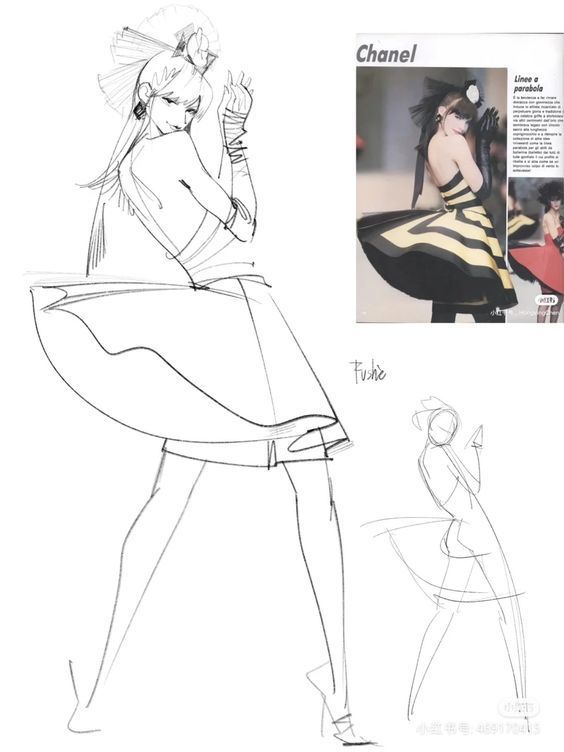
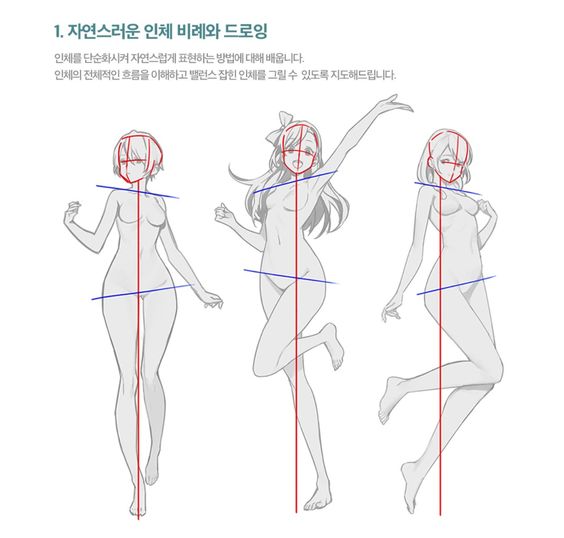
Dynamic poses capture action and movement, essential in animating scenes of intense activity or drama. They help illustrate a character’s energy and provide a sense of flow that static poses cannot.
The action line or line of action is central here. It guides the eye along a character’s movement path, enhancing the feeling of speed or motion. Characters may be drawn in mid-air, lunging forward, or with exaggerated limb movements.
Foreshortening is a key technique in dynamic poses, creating a sense of depth and perspective. Exaggeration of angles and curves can also heighten the impact, making the action leap off the page.
Emotive Expression in Poses
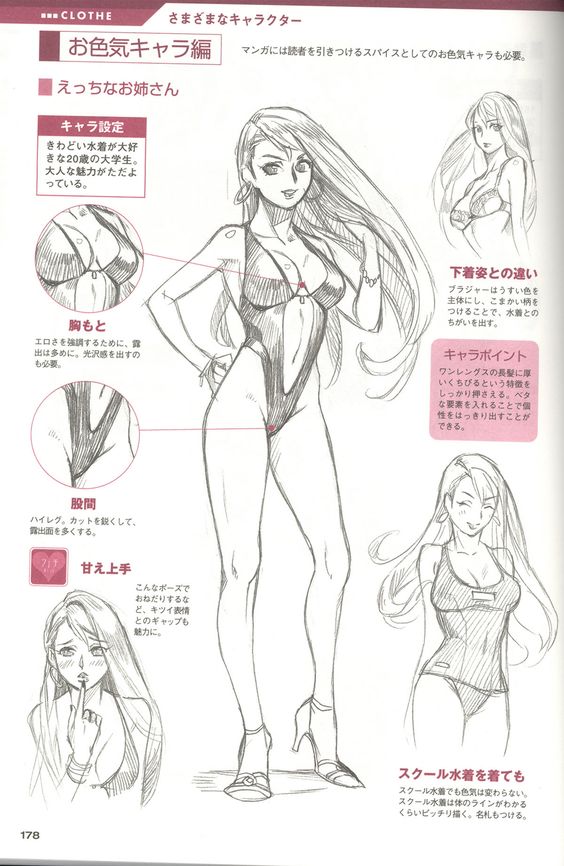
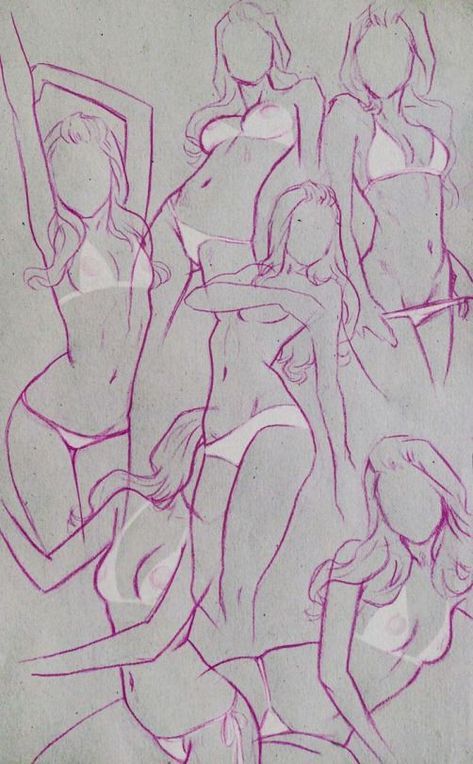
Emotive expression in poses is vital for capturing a character’s feelings and intentions. This involves subtle aspects of body language and facial gestures that bring animation to life, connecting viewers with the character’s emotional landscape.
Conveying Emotion Through Body Language
Body language serves as a silent narrative, communicating volumes without spoken words. A character’s stance, posture, and movement can illustrate a diverse range of emotions.
Movements such as slumped shoulders can signify sadness or defeat, while an open stance with arms wide open can evoke joy or excitement. The positioning of limbs, the degree of tension in the body, and even the tilt of the head each contribute specific emotional cues.
Subtle variations in poses can alter the conveyed emotion dramatically. A slight arch of the back can demonstrate confidence, while leaning forward might imply eagerness or aggression. Body language acts as a crucial component in portraying characters with emotional depth and authenticity.
Facial Expressions and Gesture
Facial expressions paired with corresponding gestures are essential to animating emotion. The interplay of eyes, eyebrows, mouth, and hands forms a language of its own.
Raised eyebrows and wide eyes often depict surprise or disbelief, while a furrowed brow can suggest concern or frustration. A smile, whether broad or slight, reflects happiness, but can also be nuanced by a smirk to indicate sarcasm or confidence.
Gestures, such as hand movements or changes in facial feature tension, add layers to the expression. When synchronized with facial expressions, these elements provide clarity to the character’s emotional state, enabling a deeper connection with the audience.
Gender Differences in Anime Poses
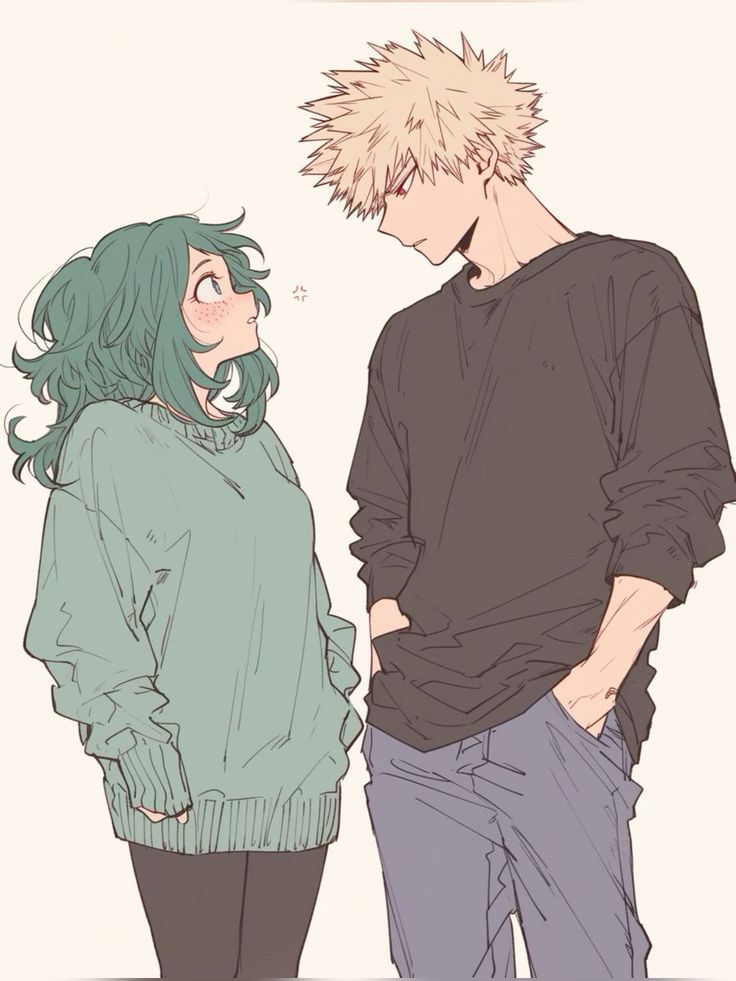
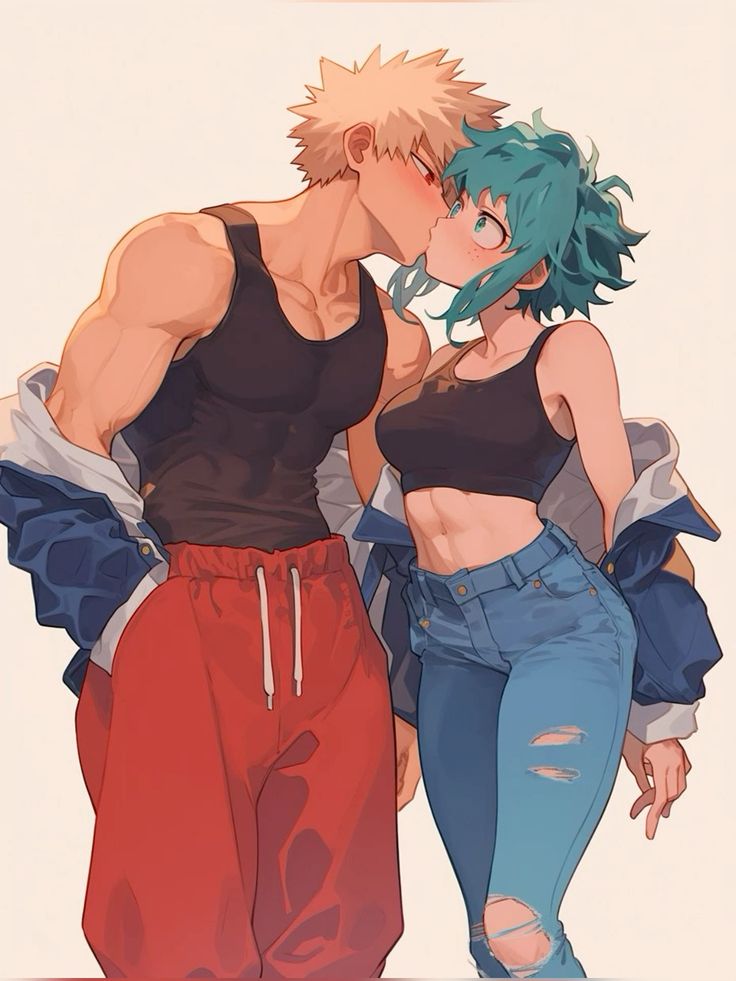
Anime poses often emphasize traditional gender characteristics. Masculine poses typically highlight strength and dominance, while feminine poses often focus on grace and elegance. These differences help convey character traits and are essential for storytelling and characterization.
Masculine Poses
Masculine poses in anime generally project assertiveness and power. Stances often feature broad shoulders and wide, confident leg positioning to convey strength. Arm positioning is another aspect, often crossed or on hips, enhancing the character’s dominant presence.
The use of angles is common, with poses typically viewed from low angles to emphasize height and size. Facial expressions are often intense or focused, adding to the impression of determination. Movement in these poses is direct and purposeful, reflecting a no-nonsense attitude.
Costume design complements these poses, often with tighter fitting clothes that emphasize muscle structure. Accessories might include weapons or objects that further emphasize the masculine traits and role of the character in the narrative.
Feminine Poses
Feminine poses focus on grace and subtlety. Body positioning often includes inward-facing feet, a slight tilt of the head, and bent arms and legs, indicating delicacy. These elements underscore a sense of vulnerability or gentleness.
Facial expressions typically include soft smiles or curious eyes, evoking warmth and approachability. Movements are often fluid and gentle, like a dancer, and include gestures such as touching the face or playful hand movements.
Clothing plays a key role, with flowing fabrics that accentuate these movements, creating a delicate silhouette. Accessories may include items like ribbons or jewelry, adding to a character’s elegance and appealing aesthetics, ultimately enhancing the storytelling with a focus on sophistication and charm.
Creating Dynamic and Unique Poses
Creating dynamic anime poses can significantly enhance a character’s expressiveness. Experimentation with angles and perspectives offers new creative dimensions. Using references from everyday actions can serve as a brilliant starting point.
A few strategies for developing these poses include:
Start with Silhouettes: Focusing on the overall shape can help capture the essence of a pose.
Use of Lines: Consider curved versus straight lines to create contrast and tension.
Balance and Weight: Paying attention to balance helps in adding realism and grounding the character.
Practical Tools:
| Method | Description |
|---|---|
| 3D Models | Use digital models to rotate and adjust positions with ease. |
| Photo Study | Analyzing real-world photos can inspire realistic yet unique poses. |
She might find that reducing stiffness leads to more natural outcomes. Exaggeration, when applied thoughtfully, can add vitality and motion to static images.
Through these approaches, one can capture not just physical form, but also emotional depth and nuanced expressions.
Remember, observation remains key; analyzing how people move in different environments can unlock exciting pose possibilities. Using reference images can act as a guide, yet allows the illustrator freedom to create something distinctly their own.
Utilizing these techniques can empower any artist in crafting compelling, animated scenes filled with energy and life.
Tips for Perfecting Anime Poses
Mastering anime poses requires a balance between realistic anatomy, dynamic line work, and accurate weight distribution. Achieving this balance brings characters to life in a believable and engaging way.
Anatomy and Proportion
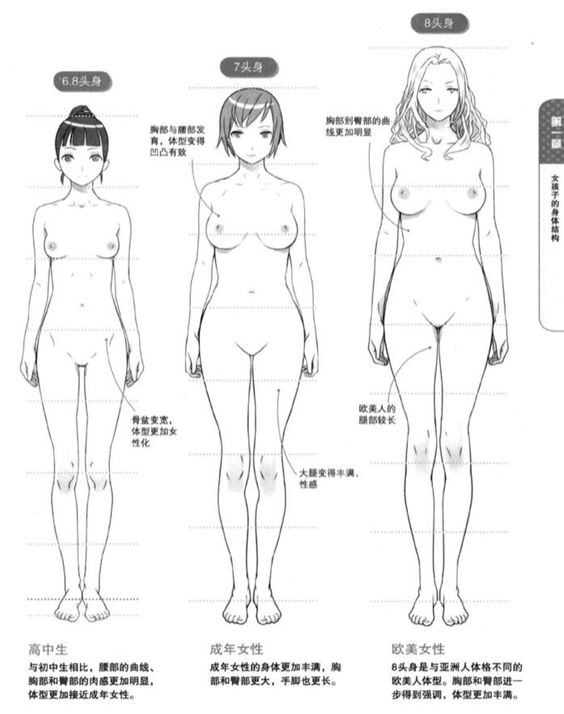
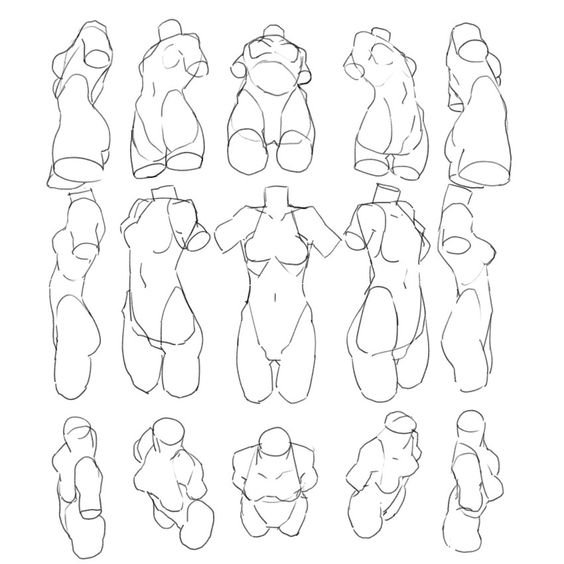
Anatomy forms the backbone of any successful anime pose. Artists should familiarize themselves with basic human anatomy to ensure that body parts are connected realistically. This doesn’t mean detailing every muscle but capturing the essence of human structure.
Proportions are also essential. Typical anime styles may exaggerate certain features, like larger eyes or longer limbs, but the proportions should remain consistent. For beginners, it might be helpful to construct poses using basic shapes such as circles and cylinders. This approach simplifies the process and helps maintain proportion.
Line of Action
The line of action is crucial for injecting energy and movement into anime poses. This imaginary line runs through the character’s posture, guiding the flow and rhythm of the pose. It helps convey emotion and intention, offering insight into the character’s situation or mood.
For instance, a strong, upward line might indicate vigor or determination. In contrast, a curved line can suggest relaxation or fluidity. Practicing drawing various lines of action can help artists internalize this concept, making it easier to incorporate into their work effortlessly.
Weight Distribution
Weight distribution gives anime poses a sense of gravity and realism. It involves understanding where the character’s weight rests and how it affects their stance and movement. An effective way to see this is by paying attention to the character’s center of gravity.
In a balanced pose, the center of gravity lines up with the base of support, such as the feet. This principle helps in avoiding stiff or awkward poses. For example, when a character leans or shifts posture, other parts of the body adjust to maintain balance. Observing real-life movements or practicing with models can improve this skill.
Advanced Techniques
Advanced techniques in anime posing involve mastering foreshortening, perspective, and the meticulous use of lighting and shadows. These elements significantly impact the depth, realism, and mood of the artwork.
Foreshortening and Perspective
Foreshortening adds depth and dynamism to anime poses by making certain parts of the body appear closer to the viewer than others. This technique requires a solid grasp of perspective to ensure accurate proportions. Artists should focus on practicing with basic shapes and gradually move to more complex figures. Using grids can help maintain consistency in perspective.
It is crucial to observe real-life references and study skeletal structure to achieve believable foreshortening. Many artists sketch preliminary lines to get the angles right. When successful, foreshortening can imbue artwork with a sense of action and immediacy. Tip: Compare different angles to understand how they change character posture.
Lighting and Shadow on Poses
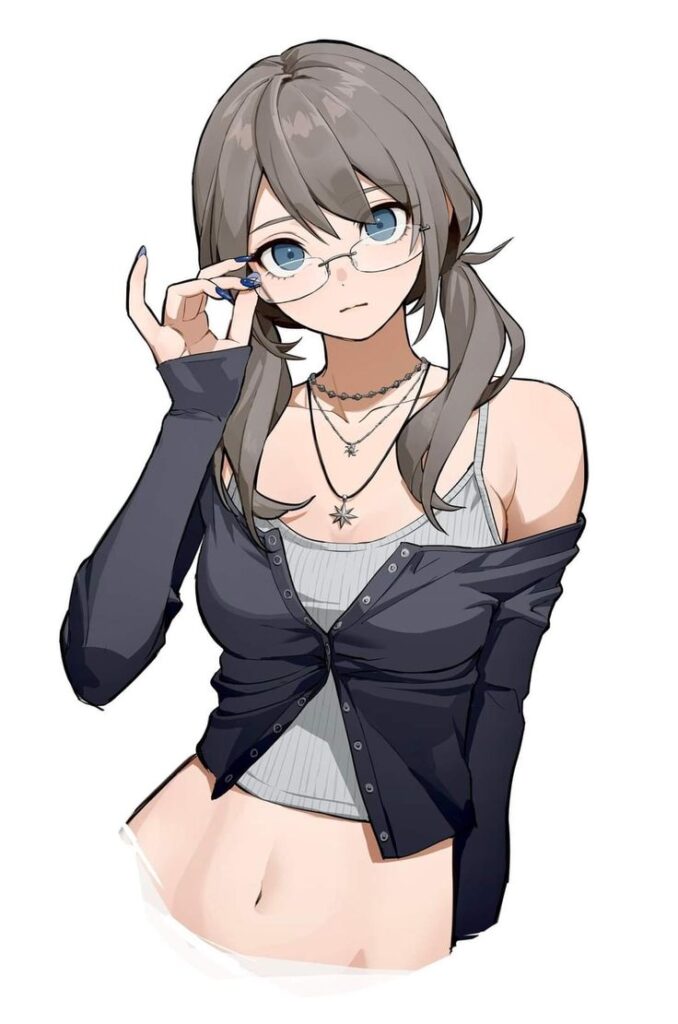
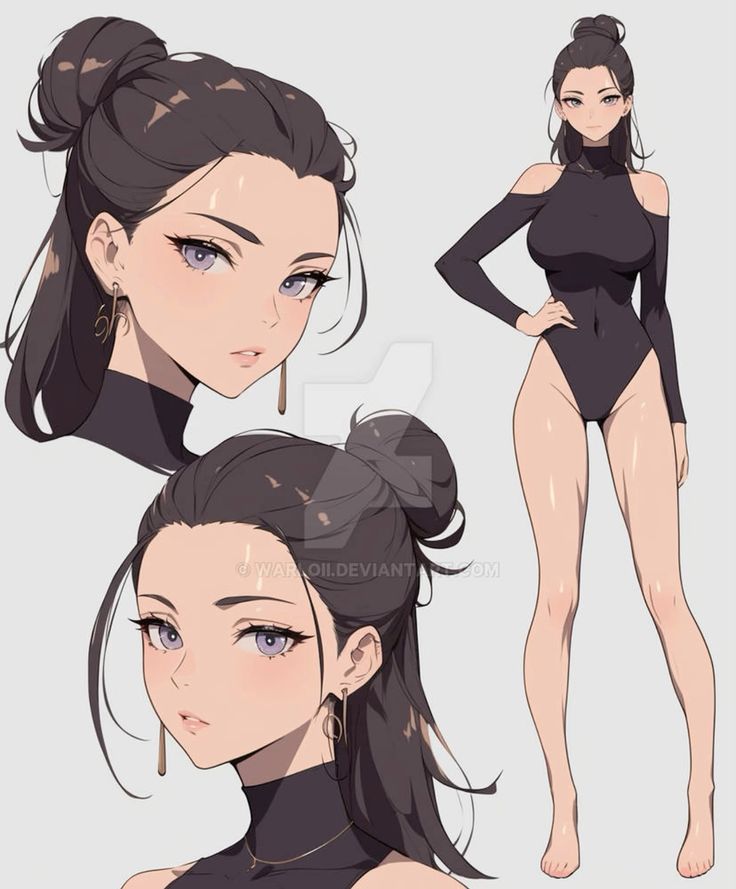
Lighting and shadows define form and create mood. They are essential when rendering anime poses, affecting how features are perceived. Artists should consider the source, intensity, and direction of light, as it shapes the character’s silhouette and adds depth.
Spotlighting can highlight specific areas, bringing focus to a character’s expression or movement. In contrast, soft, diffused lighting may convey a more subdued atmosphere. Shadow mapping and the use of tonal values add realism and visual interest. Practice hint: Experiment with different light settings to see how they affect the figure. Shadows help define outlines and add texture, influencing the overall composition of the scene.
Resources and Tools for Artists
Artists seeking references for anime poses have a broad array of tools and resources available to enhance their craft. Digital platforms offer rich libraries of images and videos, providing essential visual guidance. Websites like Pinterest and DeviantArt feature a variety of pose references, ranging from dynamic action stances to detailed character studies.
For those who prefer interactive tools, apps such as DesignDoll and Pose Tool 3D allow artists to manipulate virtual models. These programs provide customizable poses, enabling precise adjustments and enhancing creative flexibility. Users can explore different angles and lighting conditions, making it easier to sketch accurate proportions.
Books remain a valuable resource. Sketching from the Imagination: Anime & Manga and Mastering Manga series offer step-by-step tutorials and inspiration. These guides are great for traditional learners who enjoy flipping through pages at their own pace.
Online communities also play a significant role in sharing expertise. Platforms like Reddit’s r/AnimeArt and ArtStation enable artists to exchange ideas, share creations, and seek advice. Engaging in these communities helps artists stay inspired and informed about the latest techniques.
Finally, artists should consider using video tutorials available on platforms like YouTube. Channels dedicated to anime art provide instructional content on achieving correct poses, offering insights into industry-standard practices. These tutorials can be particularly helpful for visual learners who benefit from seeing techniques in real-time.
Challenges and Exercises
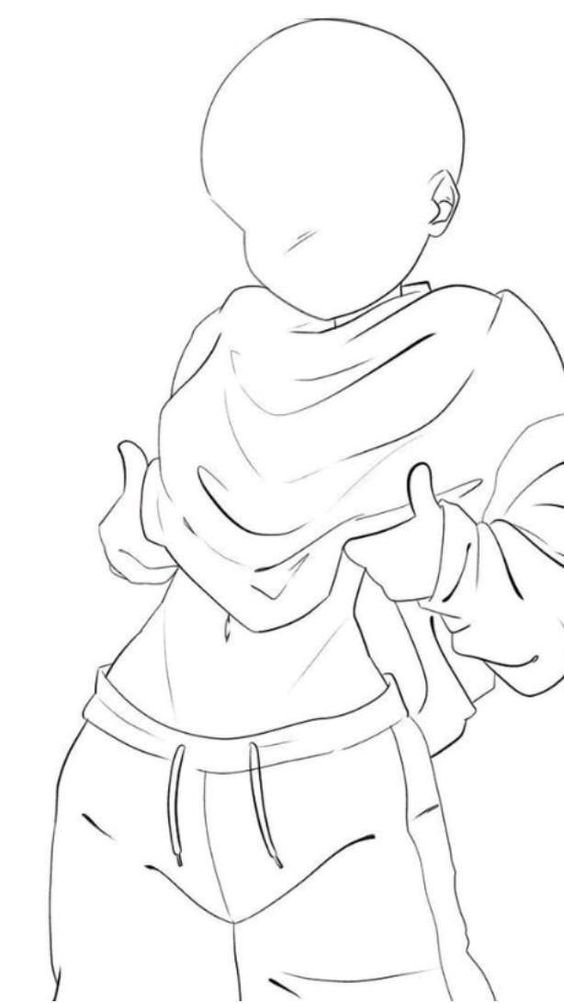
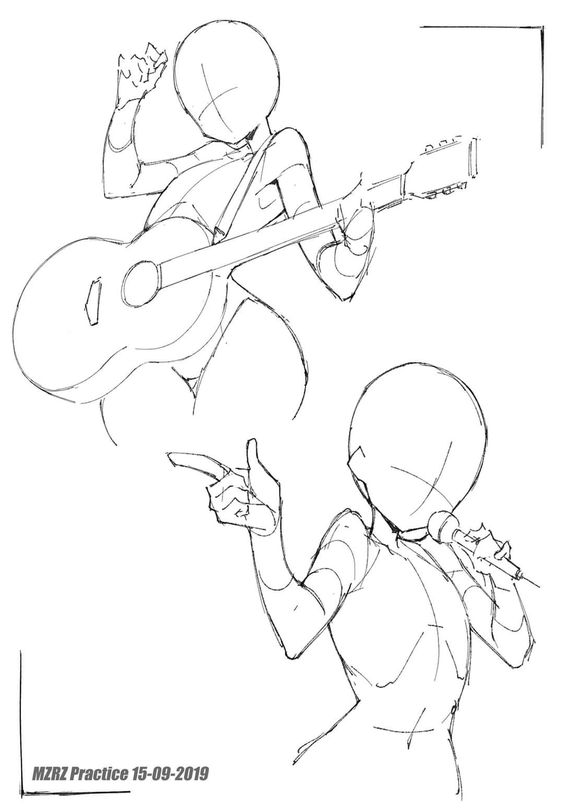
Challenges and exercises can enhance an artist’s skills in capturing anime poses. Regular practice through specific tasks leads to improvement in observation and technique.
Daily Drawing Challenges
Daily drawing challenges push artists to harness their skills consistently. Participants can set checkpoints such as creating one new pose daily. This routine builds discipline and refines the artist’s understanding of anatomy.
Creating a schedule focused on various poses helps address different perspectives and elements of movement. For instance, alternating between dynamic and static poses ensures a balanced skill set. Tracking progress through journals or digital platforms provides motivation and identifies growth areas.
Consider joining online communities for feedback and support. Platforms like Instagram and Reddit offer spaces where artists share work, gaining inspiration and constructive critique. These interactions encourage development and new ideas.
Pose Imitation Practice
Pose imitation practice allows artists to closely study existing anime poses. This activity aids in understanding form and proportion while maintaining stylization unique to anime. Selecting images from favorite shows or manga for reference can make practice engaging.
Breaking each pose into simple geometric shapes helps in grasping the basic structure. Artists should focus on recreating these shapes before adding intricate details. This step-by-step method ensures accuracy and improved skill over time.
Experimenting with minor changes in recreated poses can enhance creativity and problem-solving skills. Altering angles or expressions leads to original outcomes while remaining grounded in the imitated pose’s foundation. Regular practice ensures gradual improvement and builds a personal style.
Frequently Asked Questions
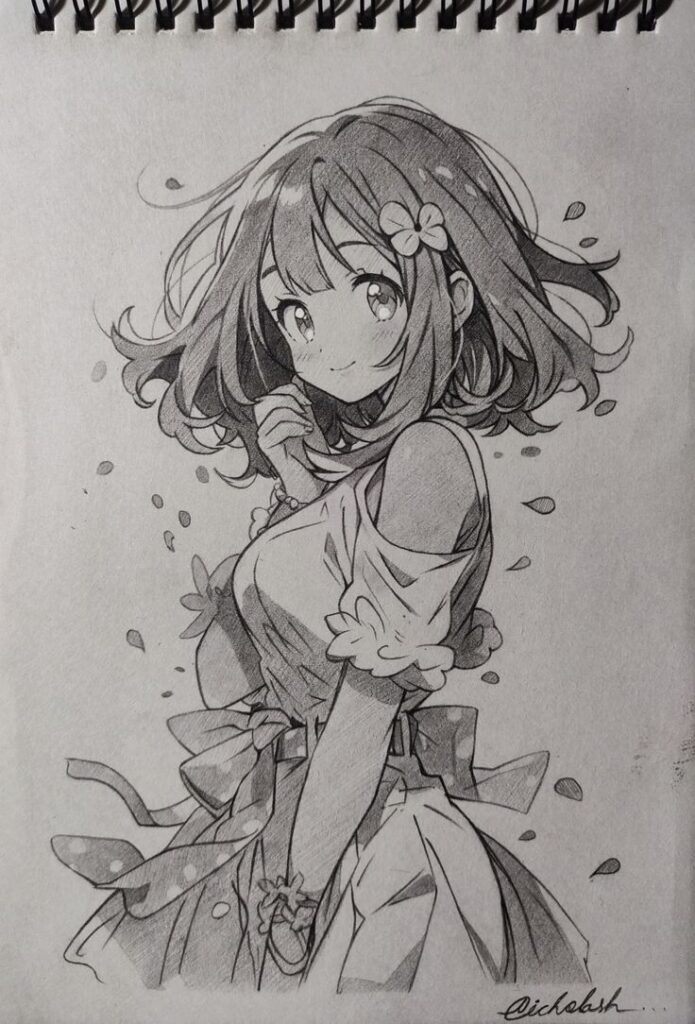
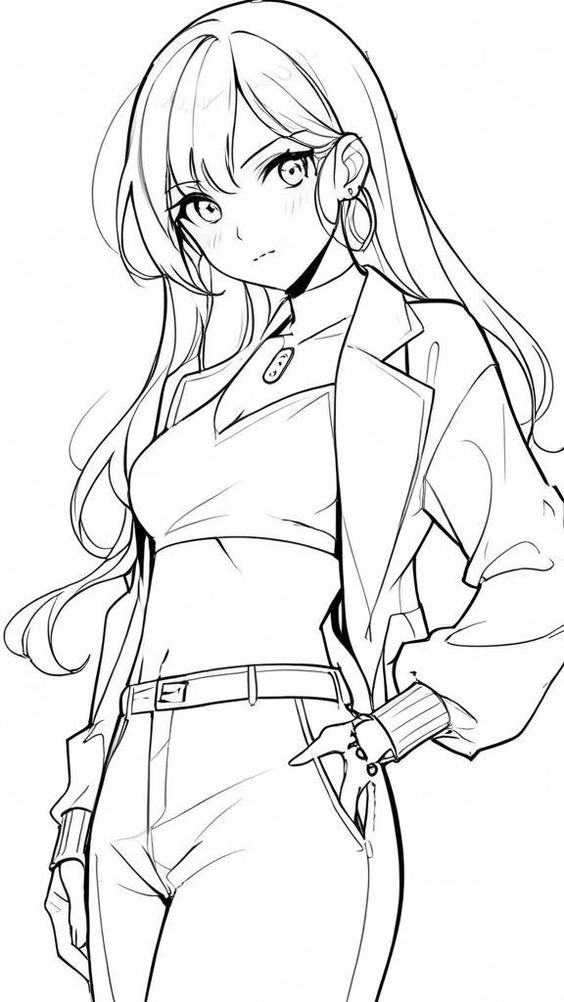
References for anime poses are essential tools for both budding and experienced artists. They provide guidance on dynamics, proportions, and expressions specific to this art style.
What are some dynamic anime poses for drawing male characters?
Dynamic poses can add energy and movement to male characters. Consider action-oriented poses like those seen in battle scenes or athletic movements. Experiment with angles and perspectives to emphasize momentum and strength.
Where can I find references for female anime character poses?
References for female poses can be found in online databases, art books, and animation guides. Websites like DeviantArt or Pinterest offer a wide variety of options created by artists from around the world.
How do I use a pose reference to draw a full-body anime character?
Using a pose reference starts with observing the proportions and posture. Begin with a light sketch, capturing the basic lines and shapes. Gradually refine the drawing by adding details and maintaining the anatomy and style characteristic of anime art.
Can you recommend any tools or generators for finding anime pose references?
Several digital tools and pose generators can be helpful. Websites like Clip Studio Paint or DesignDoll offer pose sets or 3D models that users can adjust. These can help visualize challenging angles and positions.
What are the key tips for drawing anime poses for female characters accurately?
Pay attention to proportions, facial expressions, and fluidity in lines when drawing female characters. It’s crucial to maintain the character’s personality through the pose. Use gentle curves and natural stances to express emotion and identity.
Where can I find templates to practice drawing anime character poses?
Templates can be found through online communities or educational platforms focusing on art. Websites like ArtStation or anime-specific forums often provide free or purchasable downloadable content. These templates help artists improve their skills by offering structured practice material.
- 12.1Kshares
- Facebook0
- Pinterest12.1K
- Twitter0
- Reddit0
